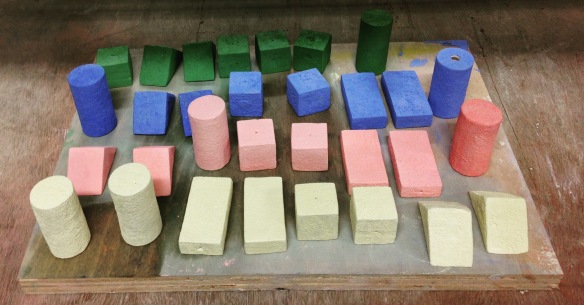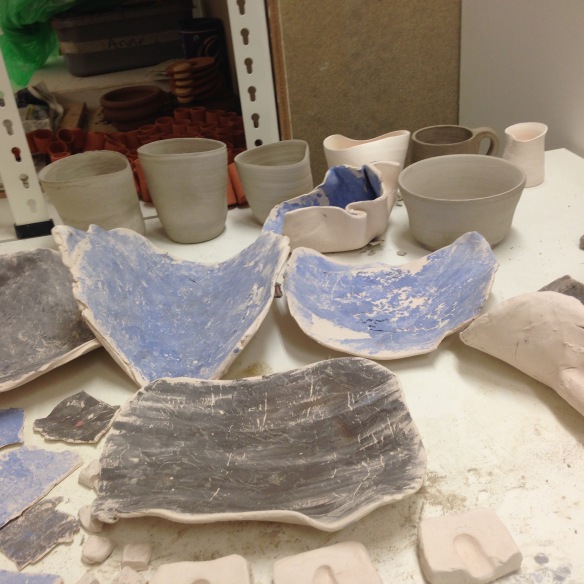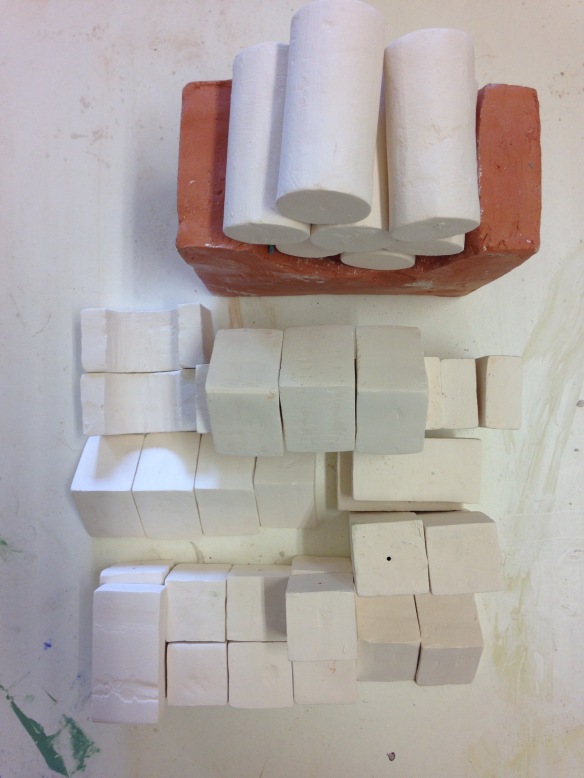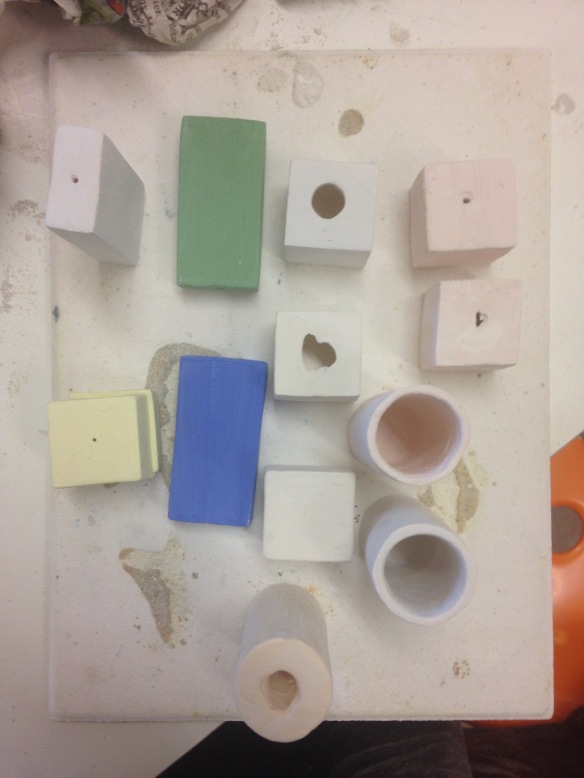So yesterday our year group form Ceramics went to Bristol and visited the Ken Stradling gallery. This is part of a project which we started in first term… we explored Stradling’s collection and picked an item of inspiration, as a starting point, my starting point being an Arne Jacobsen chair. We took our work to the gallery to have it photographed by Toril Brancher alongside the original source of inspiration.

I took this picture on the table that Jon, Fintan and Connor made during our Fo[u]r Rooms project, I think the stained scaffold planks really compliment the bright colours of my blocks, and of course, the toned down bisque terracotta brings the bright ceramic and textured brown of the wood together.

Interestingly as we left the gallery, I looked across the road and there they were! More Jacobsen chairs sitting outside a cafe. We were given different time slots for our photographs, I was in the last group of people, so we had a few hours to kill, which involved browsing in a bookshop, sunbathing and eating lunch.

Some new books I found from The Last Bookshop.. They buy in remaining stock so I managed to get four books for ten pounds! Bargain- I always prefer buying from locally run shops too than the massive chains, so it was a win-win!

A shot taken of the Bristol uni law building… a group of us were lying on a patch of grass soaking up the gorgeous sun rays.
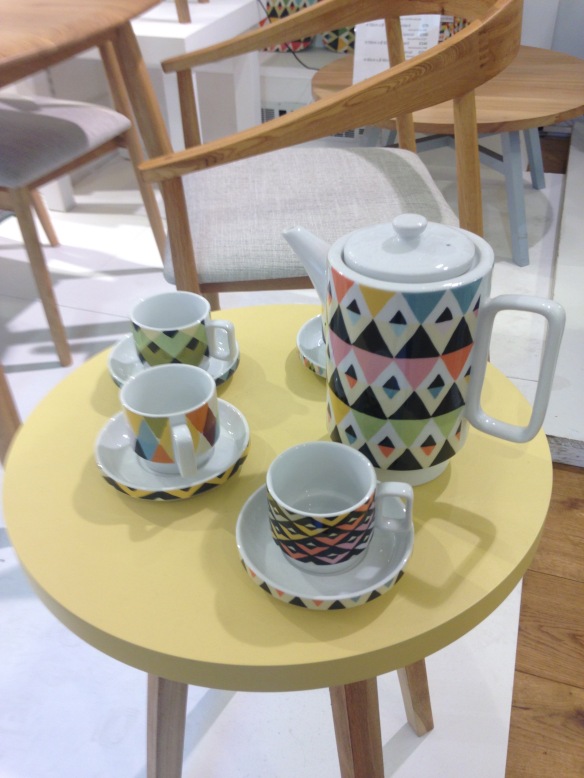
The most wonderful tea set displayed at the Bristol Guild- which is connected to Ken’s gallery- The Viva range is a collaboration between Magpie and Sarah Campbell. What’s even better is that the collection is eco-friendly. Who could say no to these fab geometric patterns?!
It’s a real privilege to be able to have my work photographed here, especially with such well established artists and designers work. I placed my building blocks on a Marcel Brauer desk to begin with, on the top floor of the gallery as I wanted to show in my photograph that people could touch them, and after all people sit at a desk to engage in whatever they have placed on the desk.

Since my inspiration came from the Arne Jacobsen chairs, I also wanted my blocks photographed on the chairs. The action of stacking is a feature both in the chairs and my building blocks, so I placed them on a stack of 3 blue chairs. Interestingly, the colour of the chairs gave my blue building blocks the dominance, bringing a new perspective to the piece.
When Toril was taking pictures, she made some very interesting points: “The best person to photograph your work is you…Because it’s the photographs which sell your work.” And that “Whatever you do, take pictures everyday”. Julia Donnely, who works at the gallery was saying that the biggest thing she learnt today (she was observing Toril taking photos of each of our work and also taking a few snaps herself) was that a camera will not capture what the eyes can see, as you have the working of you brain and perspective adding to what you see, so what everyone sees is different. Toril is currently editing the pictures, I can’t wait to see them next week, and to share them on here!


